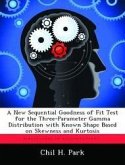This research characterizes, in the elastic range, a scarf joint with overply using digital image correlation photogrammetry and finite element modeling. Additionally, the effect of varying the overply's geometric profile is examined. Specimens are constructed from AS4/3501-6 prepreg with a [0/ 45/90]2S layup. A fixture is used to achieve a consistent scarfed hole in each panel. The patch and adhesive (FM 300) are co-cured to the panels using positive pressure, which minimizes repair porosity. Three variations in the overply geometry are used: circular, rooftop-end, and tooth-end. The full strain field in each uni-axially loaded specimen is captured using digital image correlation photogrammetry (ARAMIS). These results validate an ABAQUS 3-D finite element model of a scarf patch with circular overply. Good correlation is evident in the longitudinal strain; strain sensitivity limits correlation in the transverse and shear directions. The finite element model is used to identify peak out-of-plane stresses in the repair joint. Significant normal stresses occur at edge of the overply and at the inner scarf diameter. Finally, the experimentally-measured strains of the 3 overply variations are examined. Variation in strain magnitude is insignificant; the strain gradient at the overply edge, however, is significantly lower on the profile with the tooth-edge.








